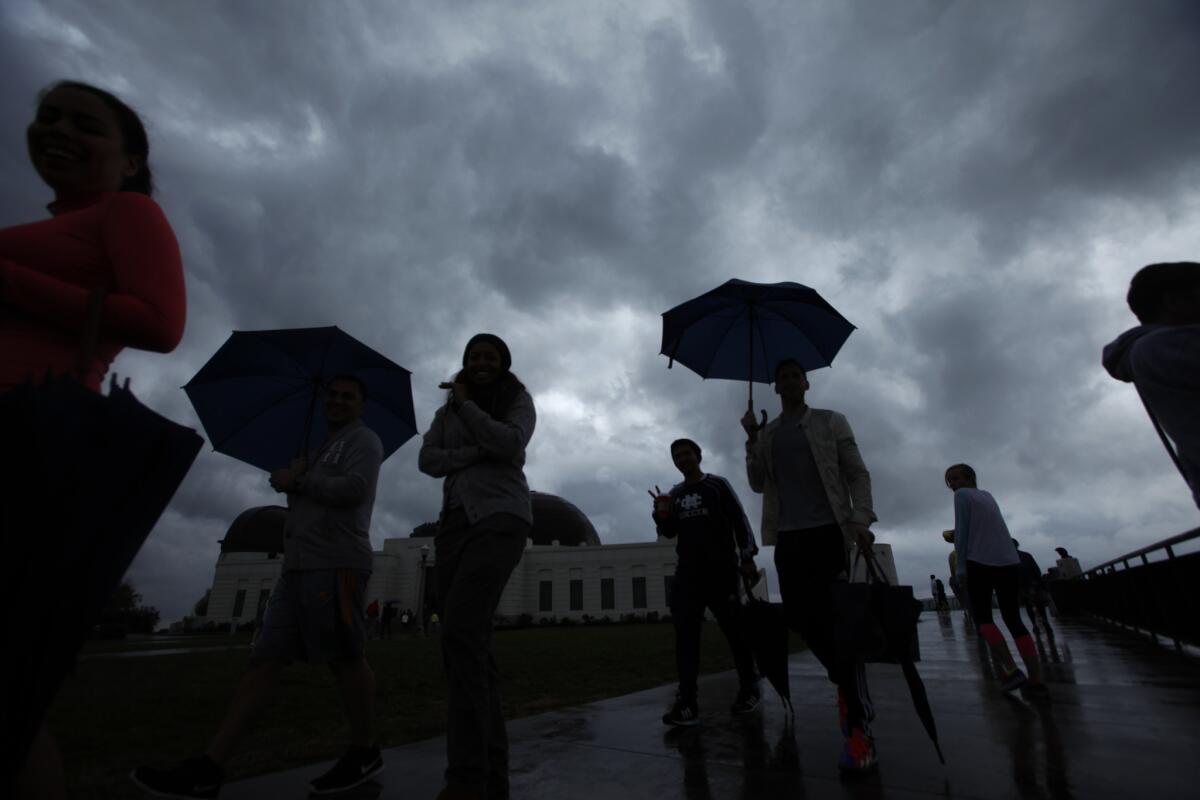Rock slide closes PCH as rains hit Southern California

- Share via
A day of scattered showers across Southern California caused a rock slide on Pacific Coast Highway Sunday afternoon.
According to the Ventura County Fire Department, two cars were stranded by the slide at Deer Creek Road, but the occupants were able to walk away. PCH is now closed. A second rockslide was reported on Decker Canyon Road.
The showers are expected to continue on and off through the evening, with scattered pockets of heavier rain.
The rain comes after a day of drenching in Northern California.
But the Pacific storm now blanketing the north is not expected to hit the Southland with full force until Tuesday.
That is when the heaviest rain, up to 5 inches in mountain areas and 1 to 2 inches in downtown L.A., will pound the region, according to the National Weather Service. The storm will weaken into light showers by Wednesday but will continue into Thursday.
Meteorologists say it will be the biggest rainstorm to hit Southern California since February.
“One storm is not a drought buster,” said JPL climatologist Bill Patzert. “But hopefully it is a small down payment and is a preview of the coming attractions for the next few months.”
This rain year is off to a dry start. Since July 1, downtown L.A. has seen half an inch of rain. Typical accumulated rainfall for this time of year is 2 inches. This storm could bring the total for the rain year to normal, Patzert said. Temperatures will remain relatively warm throughout the week, reaching the mid- to upper-60s along the coast and valleys.
Snow could form at elevations above 7,500 feet. Big Bear is expected to see warm rain that could melt the snow that already covers the slopes.
Scientists predict an El Nino -- a warming of the Pacific Ocean that, combined with shifts in the atmosphere, sometimes produces more rain -- will develop by year’s end. But so far it appears it might be a weak El Nino, Patzert said.
Wet weather would be a welcome respite for the region, which experienced unseasonably warm temperatures during Thanksgiving week.
But a major storm could spell trouble, because the Southland has not seen much rain in nine months.
Areas burned during recent wildfires are more susceptible to mudslides, Patzert said. Roads that have accumulated oil can become slick during the rain.
The last major rainstorm, a three-day soaker that brought 4 inches in late February, led to rock slides in Malibu, power outages in Long Beach and mudslides in the foothills.
“That was a mess,” Patzert recalled. “I don’t think this event will live up to that kind of rain. This might be half of that.... I can’t wait to sit on my porch and watch it rain.”
More to Read
Sign up for Essential California
The most important California stories and recommendations in your inbox every morning.
You may occasionally receive promotional content from the Los Angeles Times.









